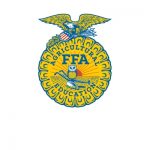Ordering seed as soon as possible and ensuring quality is essential ahead of fall planting
WASHINGTON — As we approach the fall cover crop planting season, the industry is starting to see shortages of a few different crops like radishes, hairy vetch and annual clovers due to the record amount of acreage that was planted last year as part of USDA’s prevent plant programme.
What we typically see in shortage situations is that seed will still be available to producers – however, it may be bottom of the bin in terms of quality and can carry a lot of risks.
While it is essential to get your seed ordered as soon as possible for fall planting, ensuring the quality is also paramount. Here are four things to keep an eye on when ordering seed:
 What is the purity?
What is the purity?
By law, seed being sold for planting must have a purity test to identify weed content percentages. However, this is not the case if seed is marked to be fed as livestock feed so clarity between both the seller and buyer needs to be established for what the intended purpose of the seed is.
When evaluating purity tests, there is no take it or leave it benchmark for contamination percentages. Instead, weigh up the risks against what you are trying to achieve and if the weed is going to be controllable or not.
Lastly, make sure the purity test matches the lot number stencilled on the seed bag and look at the contents before you dump it in the drill. Mistakes can happen and carry a heavy consequence of weed issues for years to come.
- Has it been tested for germination?
Again, federal law dictates that seed being sold for planting must have a germination test, typically within a nine-month window ahead of selling. Because certain seeds are very fragile and can have significant reductions in germination due to mishandling, an on-farm germination test is a good backup. This can easily be done by counting out 20 seeds, dropping them on a paper towel, wet it, roll it up and throw it in a Ziplock bag. Most seed will germinate in seven to 10 days.
- Will it work in your local environment?
While certain cover crops come into fashion and gain attention from the success seen by different producers, they need to be evaluated on how they will perform on a farm or ranch’s unique environment – just because it worked for someone 1,000 miles away, doesn’t mean it is going to work for you.
A great way to learn about what does and doesn’t work in your local area is to start speaking to your neighbors. It is important to understand what they are trying to achieve and the practices they are implementing. Another way to get an idea of what works in your area for specific goals is to analyze raw data from research trials. A platform like the Cover Crop Information Map, centralizes farm trial and industry research data into one location, allowing users to hone in on 26 different topics in their local area. Combining this data with neighbor feedback will give you a good starting point to start your own farm trials before implementing something new broadscale.
- Does it have the genetics to perform?
While it may come with a cheaper price tag and be readily available, it is best to avoid the use of variety not stated seed (VNS) as it is essentially a crapshoot when it comes to consistency of performance. To ensure good performance and to have reliable data that will allow you to make strategic management decisions, cover crop seed should be selected for variety traits.
For example, knowing things like heading dates will allow you to achieve maximum growth while being able to terminate the crop before it becomes a weed. Or, if you’re wanting to reduce bought-in feed costs, variety data will allow you to select a crop that you can count on to produce a high amount of biomass.
If you haven’t done so already, get your seed orders into your merchants as soon as possible and keep these four pieces of advice at the forefront of your purchase decision process. Not only will these considerations minimize risk and help maximize cover crop investment, but they will also ensure the purchase of quality seed of varieties that are proven to perform.
Last modified: 09/04/2020










